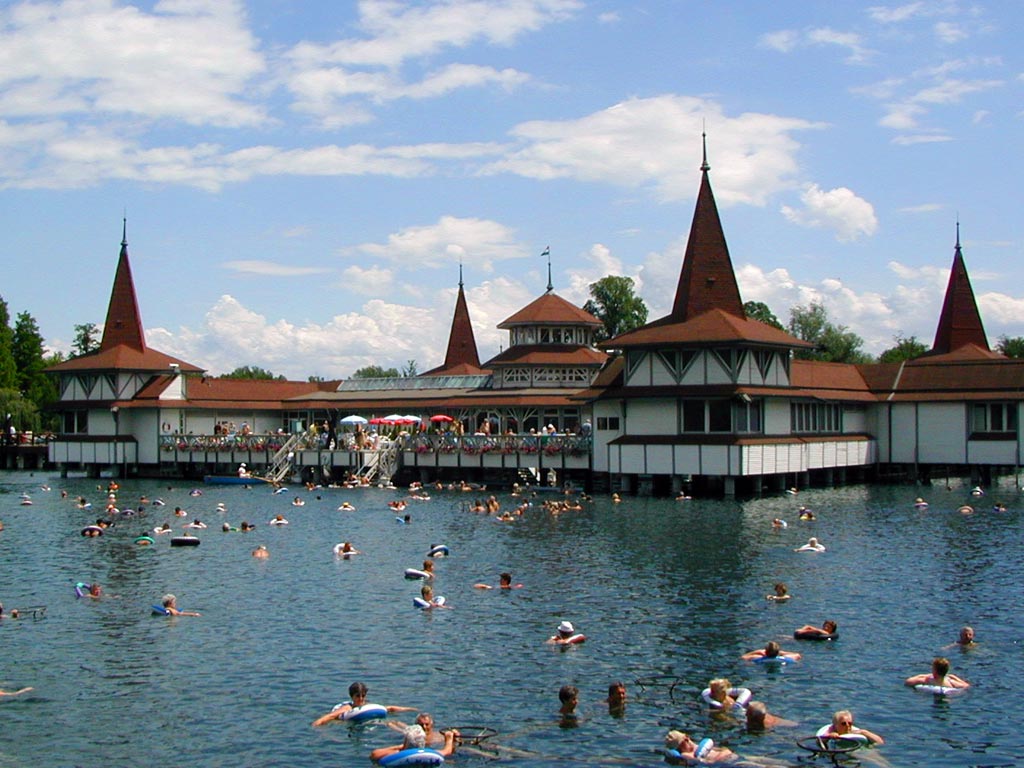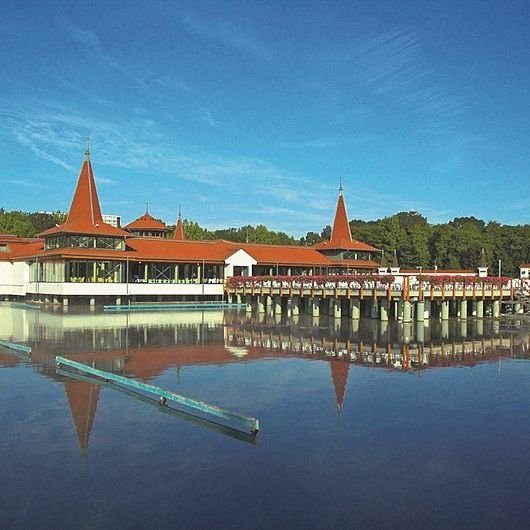Hévíz
 Hévíz town in Zala county, Keszthely district. Its main attraction is the natural pond-filled hot water lake in Europe, which makes it one of Hungary's top tourist destinations. The history of the bathing site dates back to pre-historic times. The healing effect of Lake Hévíz was probably already known by the Romans, as evidenced by the coins collected by the divers in the early 1980s and the altar found around the lake. The findings of the migration migration also suggest that the Germanic and Slavic people who turned to it used the lake as well. Hévíz is mentioned for the first time in a diploma from 1328 when the settlement is referred to as locus vulgarites Hewyz dictus.
Hévíz town in Zala county, Keszthely district. Its main attraction is the natural pond-filled hot water lake in Europe, which makes it one of Hungary's top tourist destinations. The history of the bathing site dates back to pre-historic times. The healing effect of Lake Hévíz was probably already known by the Romans, as evidenced by the coins collected by the divers in the early 1980s and the altar found around the lake. The findings of the migration migration also suggest that the Germanic and Slavic people who turned to it used the lake as well. Hévíz is mentioned for the first time in a diploma from 1328 when the settlement is referred to as locus vulgarites Hewyz dictus.The first study about the lake was published in 1769 by Ferenc Szláby. The Festetics played an important role in the creation / development of the spa, and the source and its surroundings were in the middle of the 18th century. The flowering of the bathing life is mainly due to Count Festetics, who purposefully built the bathing area. Today's settlement was formed by the unification of the villages of Hévízszentandrás and Egregy in 1946. On May 1, 1992, he received an urban title.
(Wikipedia)
Count György I. Festetics, the landowner, had the first, then rectangular, two-building baths built in 1795 over the lake. In 1801, news of the beneficial effects of the medicinal water…
Hévíz
View details




